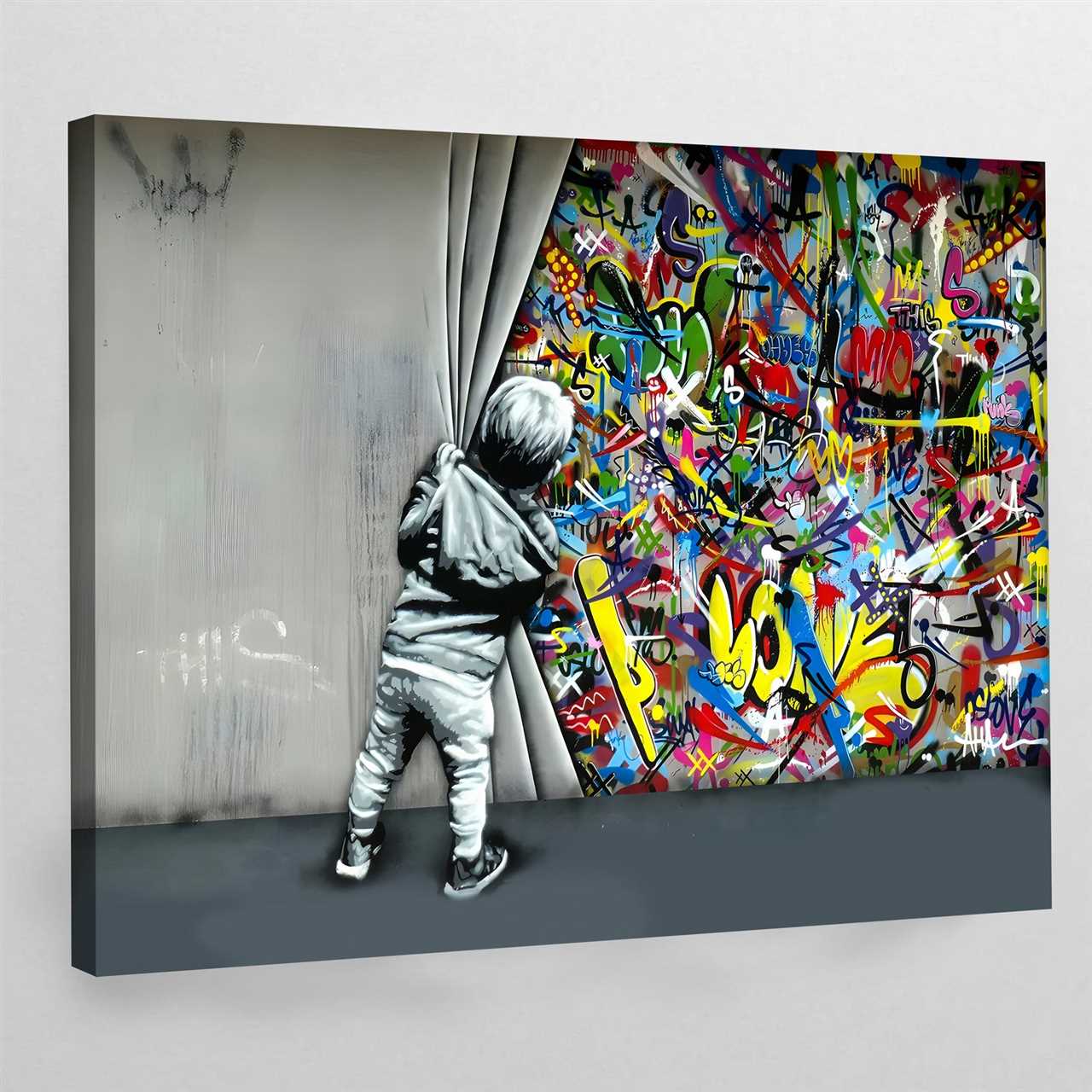
Modern graffiti art is a powerful medium that allows artists to communicate their ideas, opinions, and social commentary to a wide audience. It has become a global phenomenon, with artists from all over the world using graffiti to challenge societal norms, address political issues, and beautify urban landscapes.
Unlike traditional forms of art, modern graffiti art often blurs the boundaries between street art and fine art. It incorporates a wide range of techniques, styles, and materials, including stenciling, wheatpasting, and spray paint. This versatility allows artists to experiment and push the boundaries of what is considered art, creating visually stunning and thought-provoking works.
A notable aspect of modern graffiti art is the use of symbolism and abstraction. Many artists incorporate hidden messages, symbols, and imagery into their works, inviting viewers to interpret and engage with the art on a deeper level. This has transformed graffiti from a mere act of vandalism to a legitimate art form that is celebrated and appreciated by many.
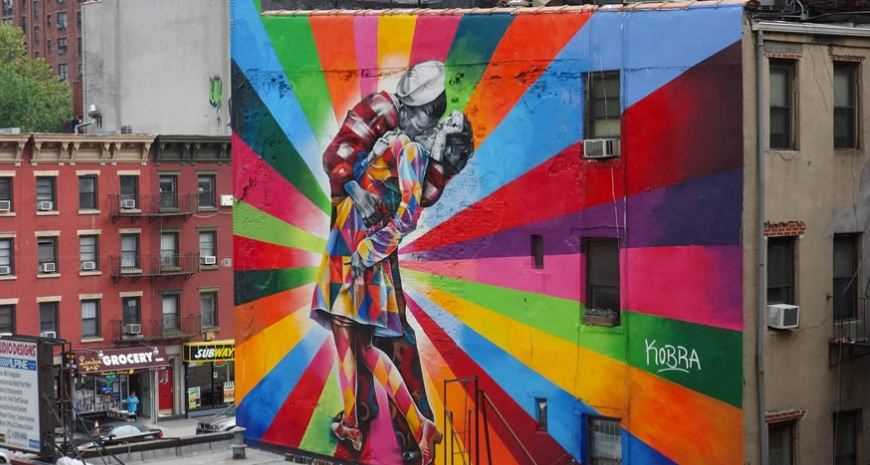
Graffiti, once seen as a destructive and illegal form of expression, has evolved into a recognized art form worldwide. Its roots can be traced back to ancient civilizations and have since grown into a diverse and influential movement.
Early Forms of Graffiti
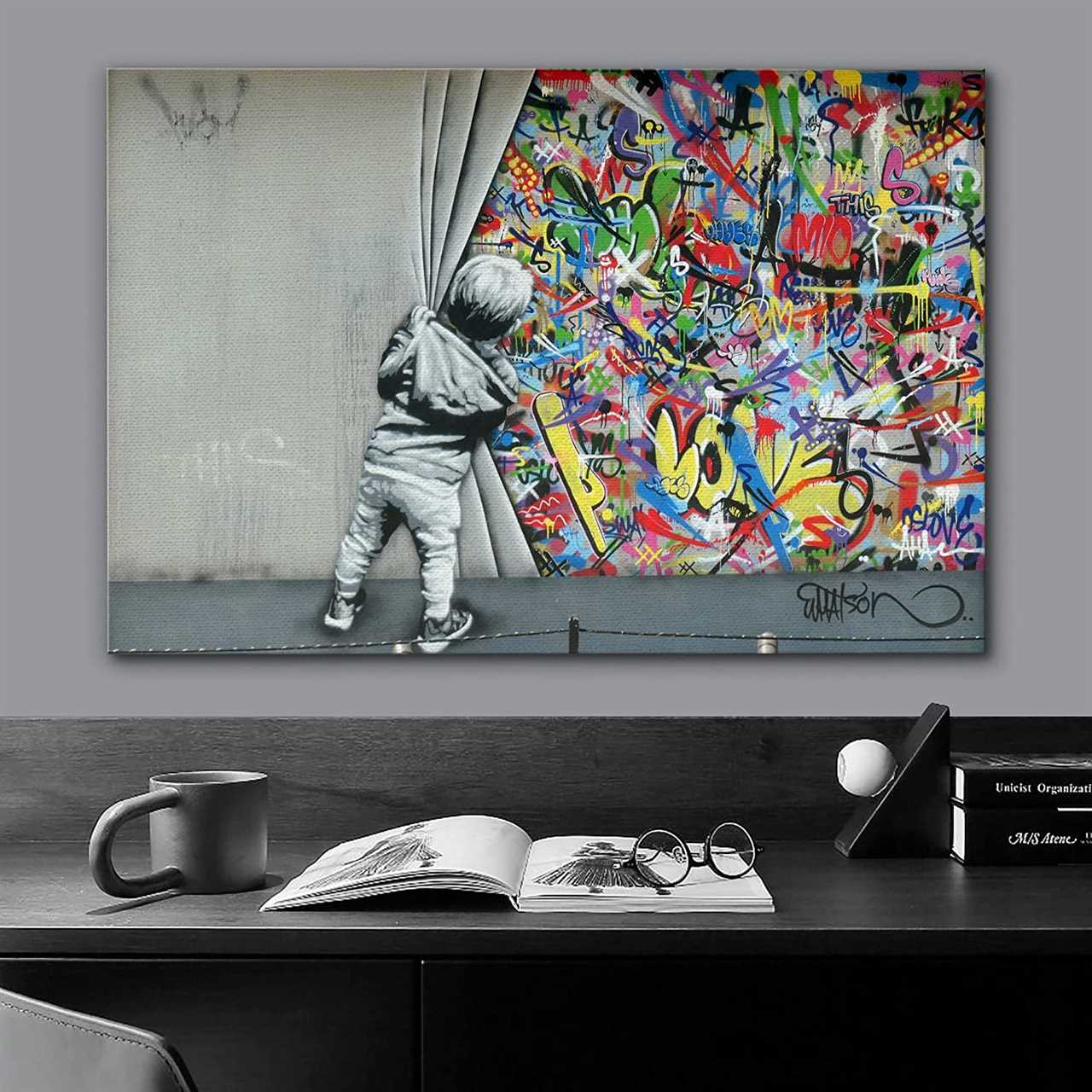
The earliest signs of graffiti can be found in ancient cave paintings and inscriptions. These early forms of graffiti served as a way for individuals to leave their mark and communicate with others. In more recent history, graffiti gained popularity in the 1960s and 1970s through the rise of street culture and hip-hop movement.
The Birth of Modern Graffiti
In the 1970s, graffiti art began to emerge on the streets of New York City, particularly in the borough of the Bronx. Graffiti artists such as TAKI 183 and CORNBREAD gained notoriety for their bold and colorful tags. This marked the birth of modern graffiti art.
The Rise of Street Art
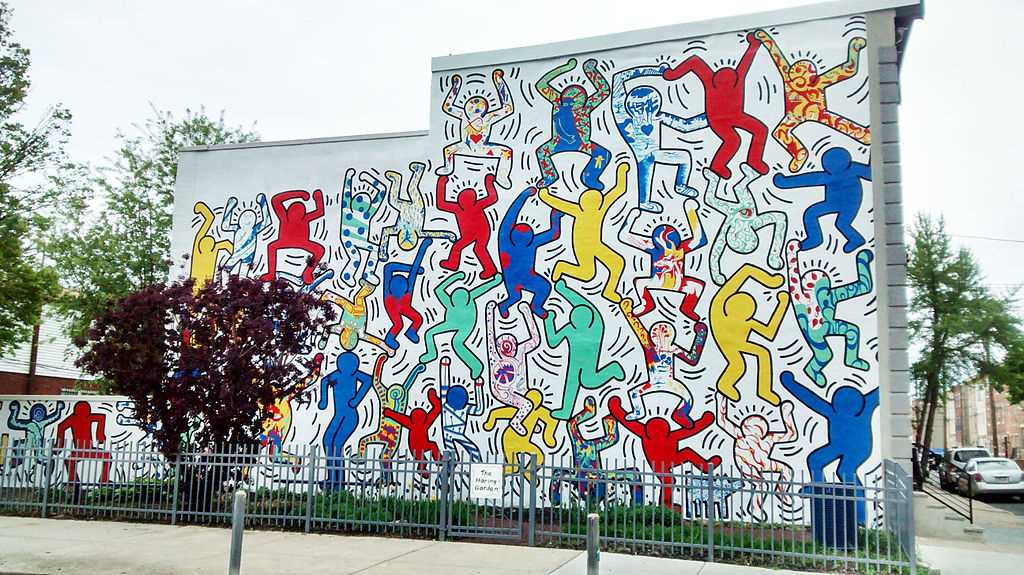
In the 1980s and 1990s, graffiti art evolved further with the emergence of street art. This movement was characterized by larger and more intricate murals, often incorporating political or social messages. Artists like Keith Haring and Banksy became influential figures in the street art scene, using their work to challenge societal norms and raise awareness.
Recognition as an Art Form
Despite its underground origins, graffiti art has gradually gained recognition as a legitimate art form. Museums and galleries around the world now showcase graffiti artists’ work, and some have even been commissioned for public installations.
The Influence of Graffiti Art
Graffiti art has had a significant influence on other art forms, including graphic design, fashion, and advertising. Its rebellious and provocative nature continues to inspire artists and push the boundaries of creative expression.
The Influence of Urban Environment
The urban environment plays a crucial role in shaping the world of modern graffiti art. Often associated with rebellion and counterculture, graffiti artists find inspiration in the chaos and energy of the city. The bustling streets, vibrant colors, and constant movement all contribute to the unique aesthetic and message that graffiti art conveys.
One of the key influences of the urban environment on graffiti art is the sense of anonymity and freedom it offers. The city provides a canvas that is constantly changing and evolving, allowing artists to express themselves without fear of judgement or reprisal. The abandoned buildings, empty walls, and overlooked spaces become a playground for creativity, where artists can experiment and push the boundaries of their art.
Another significant influence of the urban environment is the social and political landscape of the city. Graffiti art often serves as a visual commentary on issues such as inequality, racism, and gentrification. Artists use their work to challenge the status quo, raise awareness, and provoke dialogue among members of the community. By choosing public spaces to display their art, graffiti artists ensure that their message is accessible to a wider audience, ultimately aiming to inspire change and action.
Moreover, the diversity and multiculturalism inherent in urban environments contribute to the richness and variety of graffiti art. Different cultures, languages, and histories intersect in the city, providing a melting pot of ideas and artistic styles. Artists draw inspiration from their own cultural backgrounds as well as the influences they encounter in the city, resulting in a dynamic and eclectic art form.
The Role of Street Art in Urban Culture
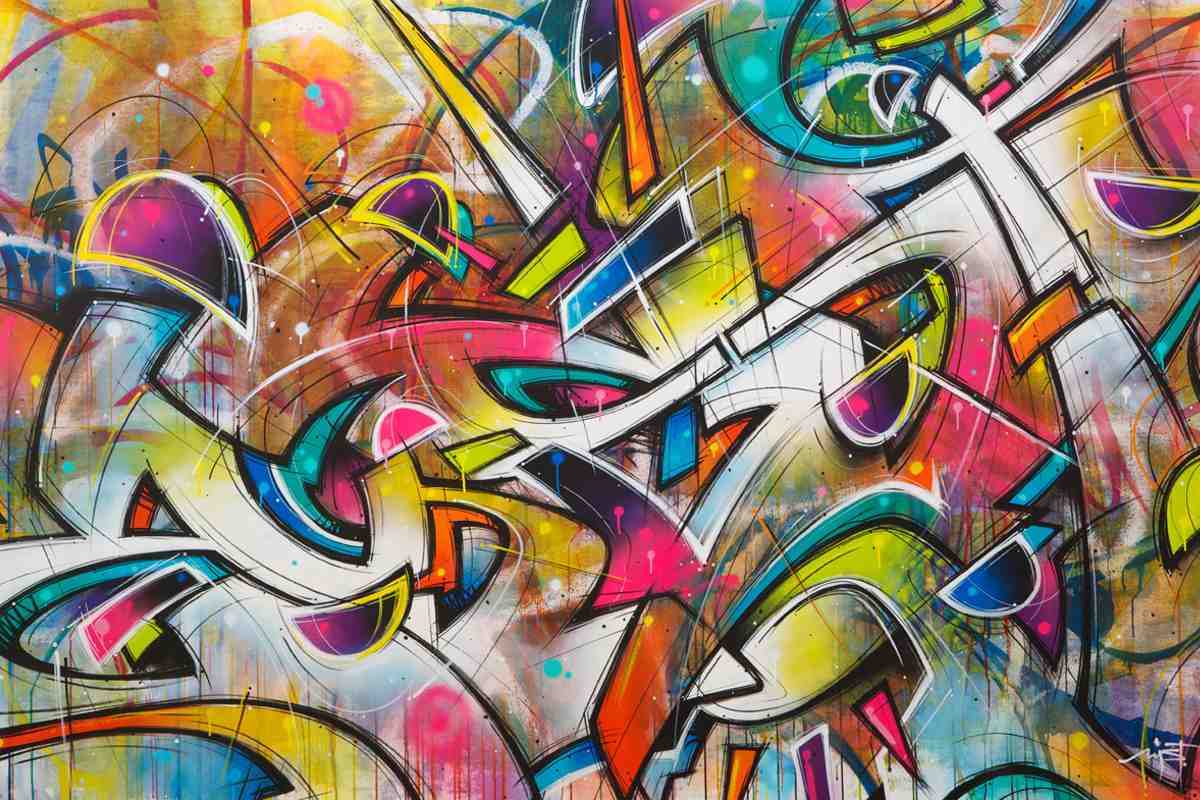
Street art plays a significant role in shaping the urban culture of cities around the world. This form of artistic expression is often seen as a way for individuals to reclaim public spaces and challenge traditional notions of art and beauty.
One of the key roles of street art is its ability to engage and provoke a response from the public. Whether through bold and colorful murals or thought-provoking stencils, street art has the power to captivate and inspire. It can spark conversations, raise awareness about important social issues, and challenge the status quo.
Street art also serves as a means of cultural expression for marginalized communities. It gives a voice to those who may not have access to traditional art platforms, allowing them to express their experiences, thoughts, and emotions in a powerful and public way. In this sense, street art can act as a form of resistance and activism, helping to bring about social change.
Furthermore, street art has the ability to transform the physical environment of a city, adding vibrancy and character to otherwise dull and neglected spaces. It has the power to turn a plain wall into a canvas for creativity and imagination. By brightening up public spaces, street art can contribute to a sense of pride and community identity.
However, street art is not without its controversies. Many argue that it is a form of vandalism and illegal activity, detracting from the beauty and cleanliness of a city. The debate over whether street art should be viewed as art or as vandalism continues to divide opinions.
Nevertheless, the growing acceptance and recognition of street art as a legitimate form of artistic expression cannot be denied. Many cities now embrace street art by commissioning artists to create large-scale murals and hosting street art festivals. This shift in perception highlights the evolving role of street art in urban culture.
The Use of Spray Paint in Graffiti Art
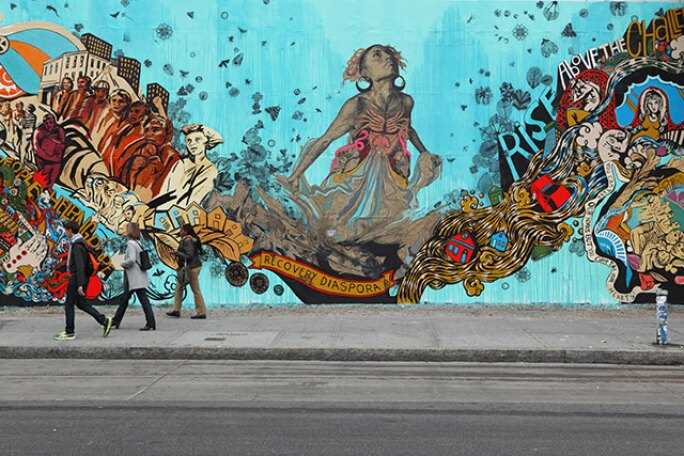
Spray paint is one of the most commonly used mediums in graffiti art. It provides artists with a quick and efficient way to create large-scale murals and vibrant pieces of art. The use of spray paint allows graffiti artists to easily cover a large surface area and achieve bold, eye-catching colors.
Spray paint cans are designed specifically for this purpose, with a valve system that controls the release of paint in a fine mist. This allows artists to control the flow and intensity of the paint, resulting in precise lines and gradients. Additionally, the wide variety of colors available in spray paint cans enables artists to experiment and create unique color combinations.
The mobility of spray paint cans also contributes to the popularity of this medium. Graffiti artists often need to work quickly and discreetly, as graffiti is illegal in many areas. The compact size and ease of use of spray paint cans allow artists to quickly move from one location to another and create their art in a matter of minutes.
Techniques and Styles
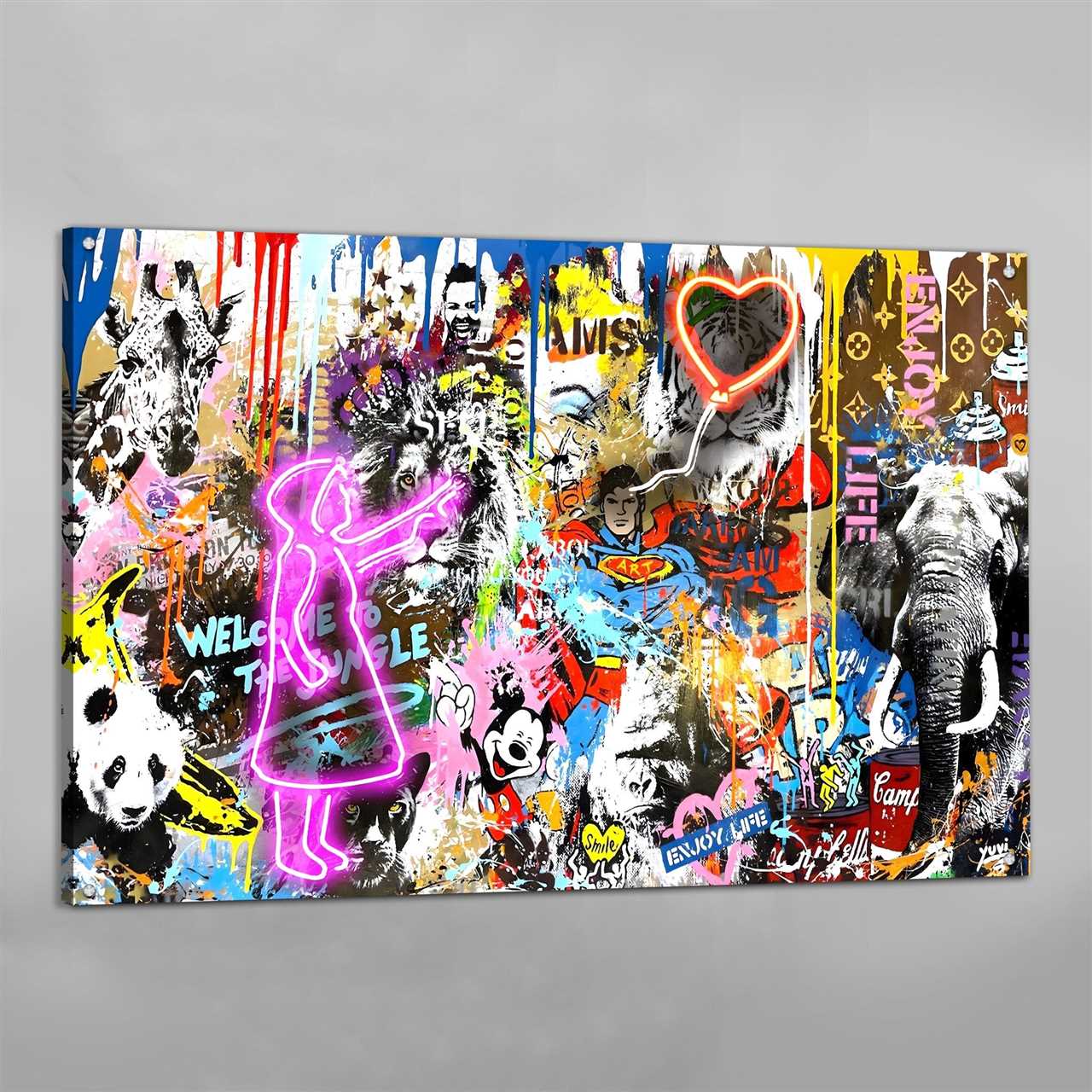
Another common technique is “freehand graffiti,” where artists use spray paint cans directly on the surface without any stencil or guidelines. This technique requires a high level of skill and control, as artists must be able to create smooth lines and intricate designs using only the spray paint can.
The Influence of Spray Paint on Graffiti Art
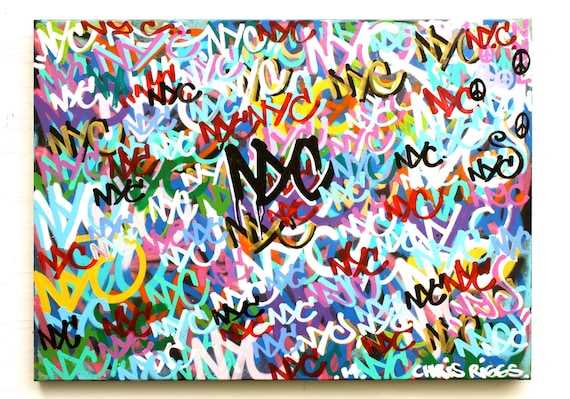
The use of spray paint has had a significant impact on the development of graffiti art. It has allowed artists to create large-scale works of art that can be seen and appreciated by a wide audience. The vibrant colors and bold designs created with spray paint have also contributed to the recognition and acceptance of graffiti as a legitimate form of art.
Furthermore, the accessibility of spray paint has made it easier for aspiring graffiti artists to get started. The availability of affordable spray paint cans in art supply stores has made it possible for anyone with a creative vision to create graffiti art.
The Colorful Expression of Modern Graffiti Art
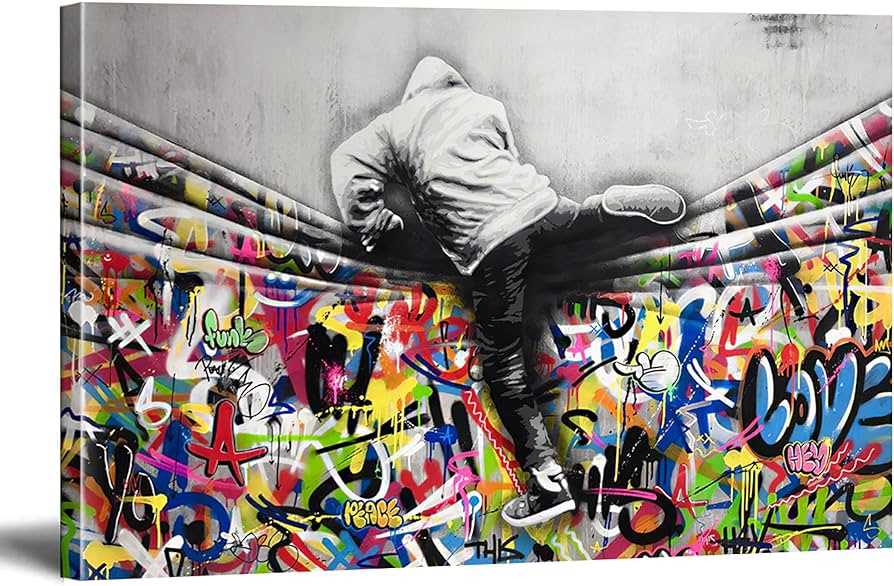
Graffiti art has evolved into a vibrant and dynamic form of self-expression in the modern era. Artists use bright colors and bold designs to convey their messages to a wide audience.
The Evolution of Graffiti
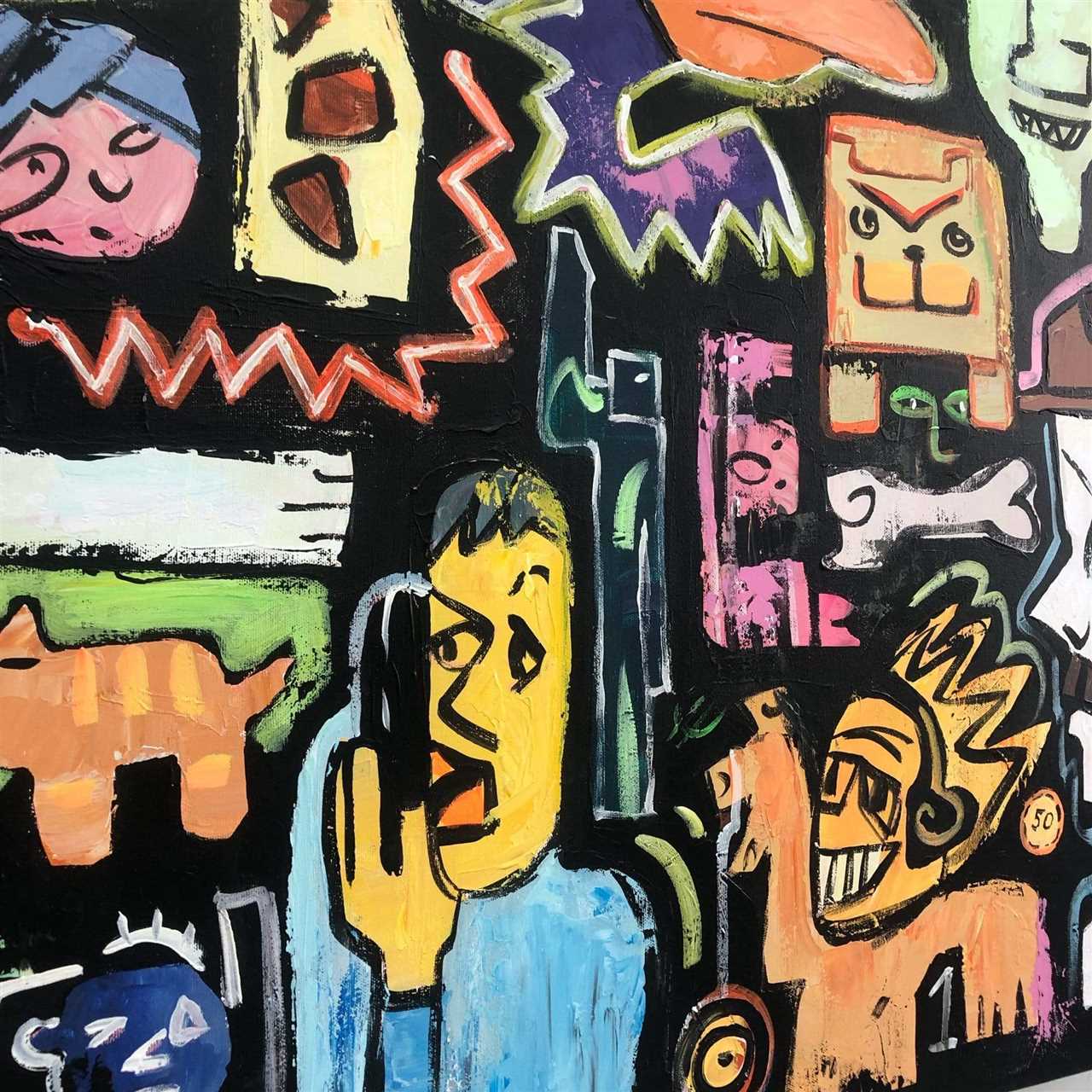
Graffiti has come a long way from its origins as simple tags and scribbles on walls. It has transformed into an art form that combines elements of street art, typography, and illustration. Today, graffiti artists create intricate murals and artworks that showcase their creativity and skill.
Modern graffiti art is heavily influenced by hip-hop culture, with its vibrant colors and rhythmically flowing forms. Artists use spray paint, markers, and other tools to create layers of color and texture, resulting in visually striking pieces that demand attention.
The Power of Color
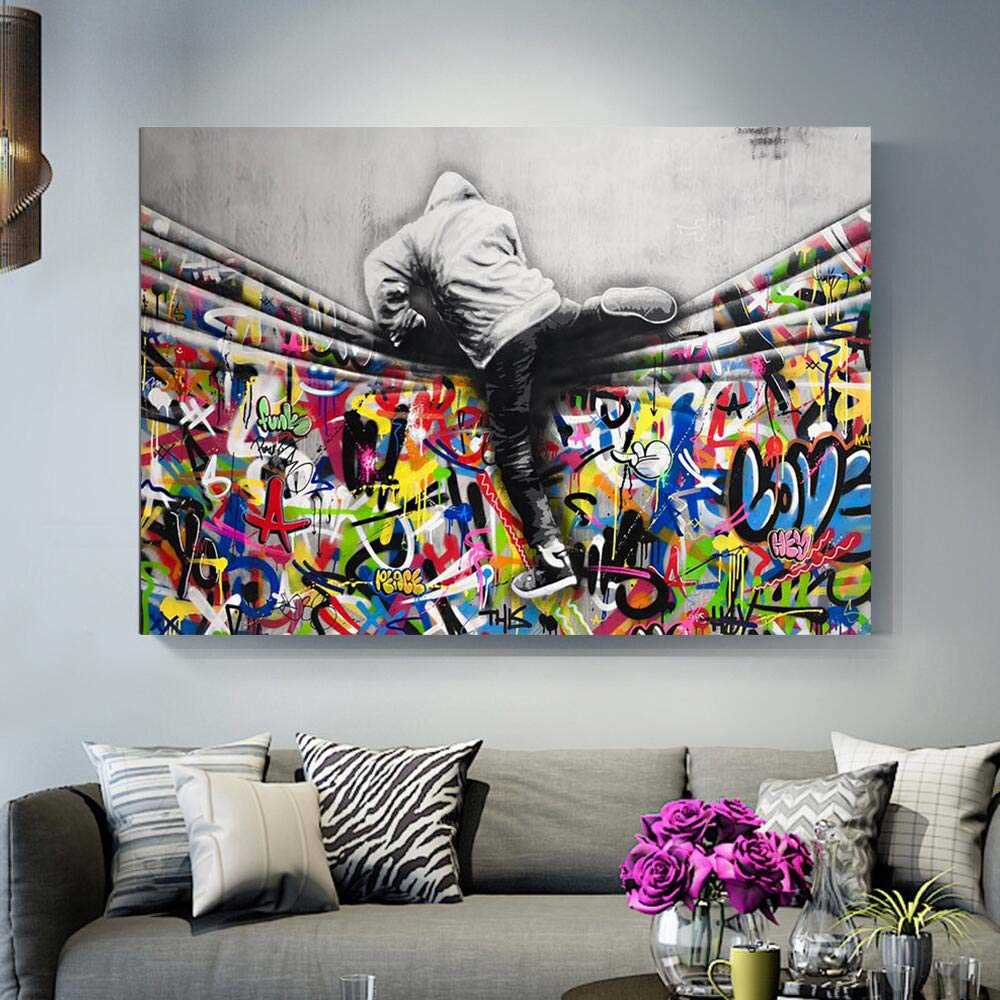
One of the defining features of modern graffiti art is its use of color. Artists carefully select their palettes to evoke specific emotions and create striking visual contrasts. The juxtaposition of bright hues against dark backgrounds or the use of complementary colors can create a powerful visual impact.
Colors in graffiti art are not just for aesthetic appeal but also serve as symbolic representations. Each color can hold different meanings and convey specific messages. For example, red is often associated with passion and energy, while blue can represent calm and serenity. Artists employ these colors strategically to enhance the overall impact of their art.
The Expression of Identity
Graffiti art is not just about colors and designs; it also serves as a means of self-expression for artists. Through their artwork, artists can communicate their individuality, opinions, and perspectives on social issues. Graffiti often reflects the cultural and political climate of its surroundings, providing a platform for marginalized voices to be heard.
The use of vibrant colors in graffiti art allows artists to grab attention and make powerful statements. By taking their art to the streets, they challenge the norms and reclaim public spaces for creative expression. The colorful and bold nature of graffiti art serves as a visual reminder of the diversity and energy that exists within urban environments.
The Modern Techniques and Styles in Graffiti Art
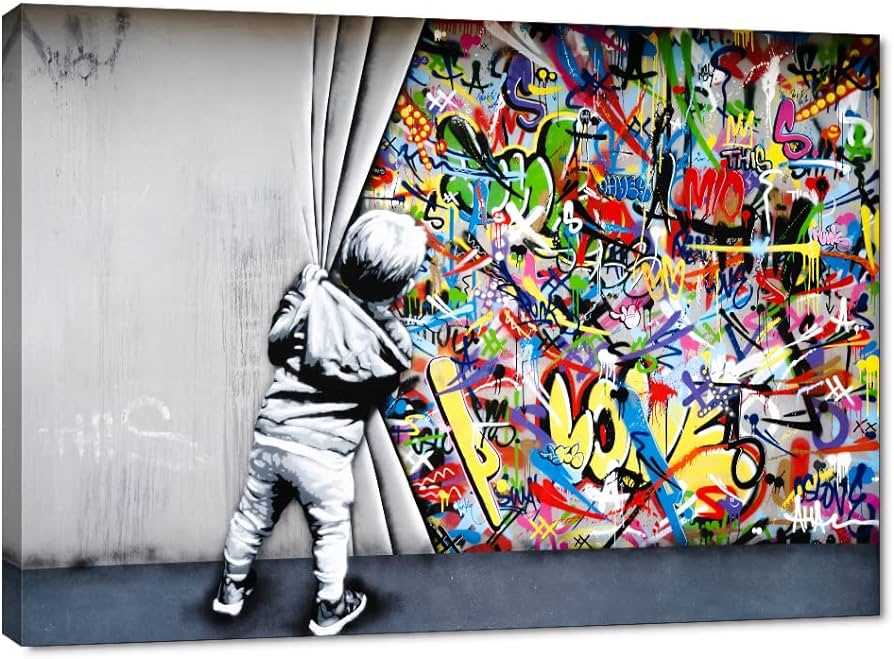
Graffiti art has evolved over the years, with artists constantly pushing the boundaries of what is possible within this urban art form. Modern graffiti artists use a variety of techniques and styles to create their artwork, often drawing inspiration from traditional graffiti while also incorporating new and innovative approaches.
Stencil Graffiti
One of the most popular techniques used in modern graffiti art is stencil graffiti. This involves creating a stencil, usually out of cardboard or plastic, and then spraying paint over it to create a design. Stencil graffiti allows artists to quickly reproduce their artwork and create intricate designs with clean edges and sharp lines.
Mural Graffiti
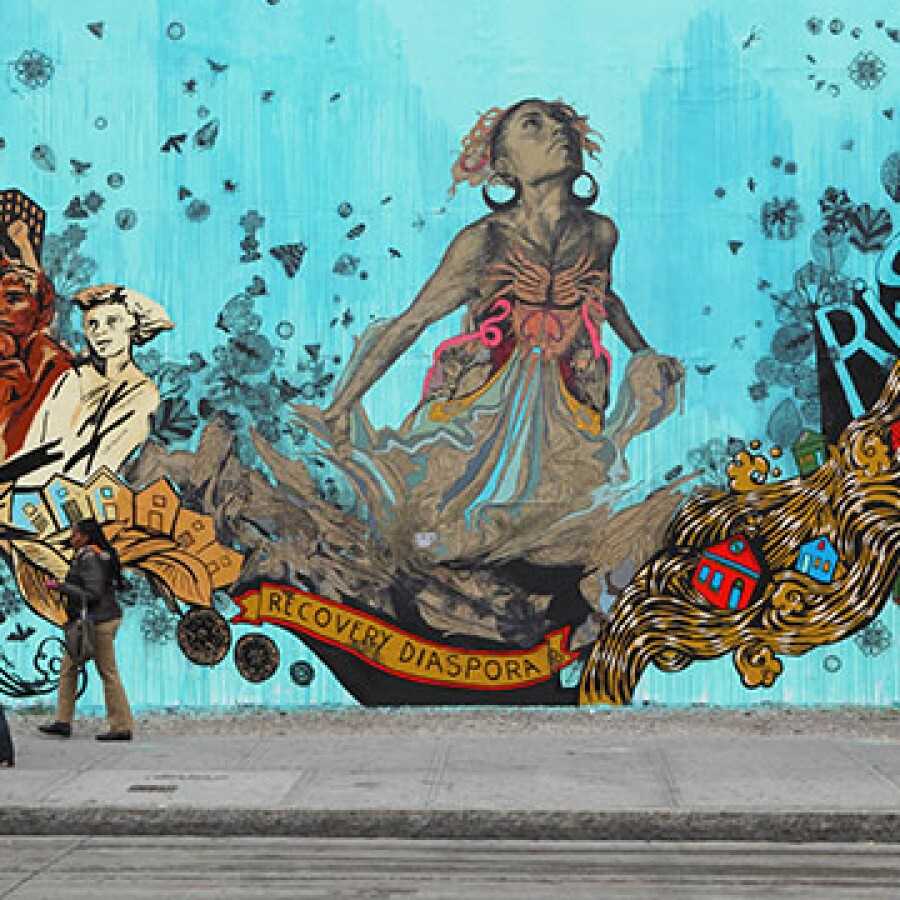
Other modern techniques and styles in graffiti art include:
| Technique/Style | Description |
|---|---|
| Wildstyle | A complex and abstract style of graffiti characterized by interlocking and overlapping letters, often difficult to read. |
| Throw-up | A quick and simple style of graffiti consisting of bubble letters filled with a solid color. |
| Tagging | The signature or nickname of the artist, often done in a quick and stylized manner. |
| Calligraffiti | A fusion of calligraphy and graffiti, combining elegant lettering with urban aesthetics. |
These techniques and styles continue to evolve and inspire new generations of graffiti artists. Whether it’s through stencils, murals, or other methods, modern graffiti art offers an exciting and dynamic form of self-expression in urban environments.
The Social and Political Commentary in Graffiti Art
Graffiti has long been used as a form of expression and protest, providing artists with a way to communicate their thoughts and ideas directly to the public. In many instances, graffiti art serves as a powerful platform for social and political commentary.
Social Commentary in Graffiti Art
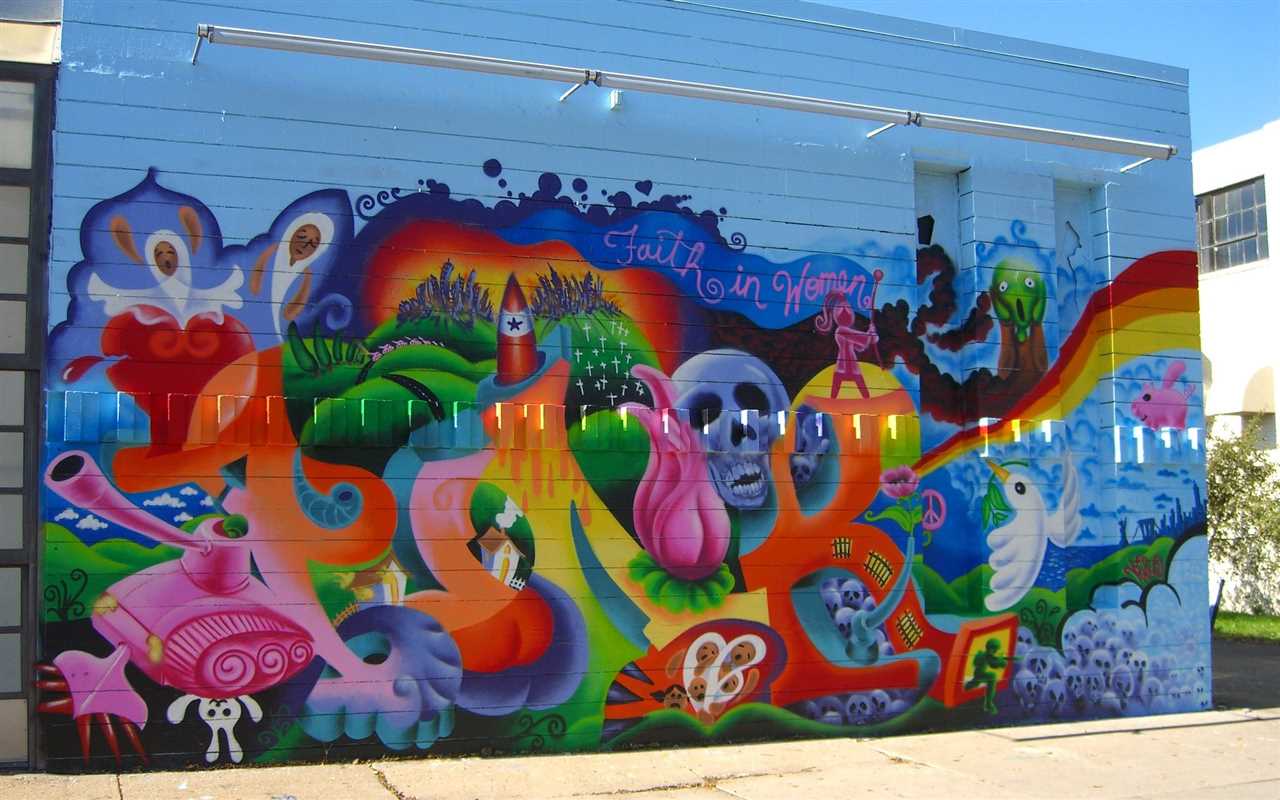
Graffiti artists often use their work to shed light on social issues and challenges within society. By creating thought-provoking images and messages, they aim to spark conversations and raise awareness about these critical issues. From poverty and inequality to racism and homelessness, graffiti art serves as a visual representation of the struggles faced by communities worldwide.
One example of social commentary in graffiti art is the creation of murals that depict the plight of refugees. These powerful images often appear in areas heavily trafficked by both locals and tourists, ensuring maximum visibility and impact. By showcasing the struggles faced by refugees, graffiti artists hope to humanize their stories and encourage empathy and support.
Political Commentary in Graffiti Art
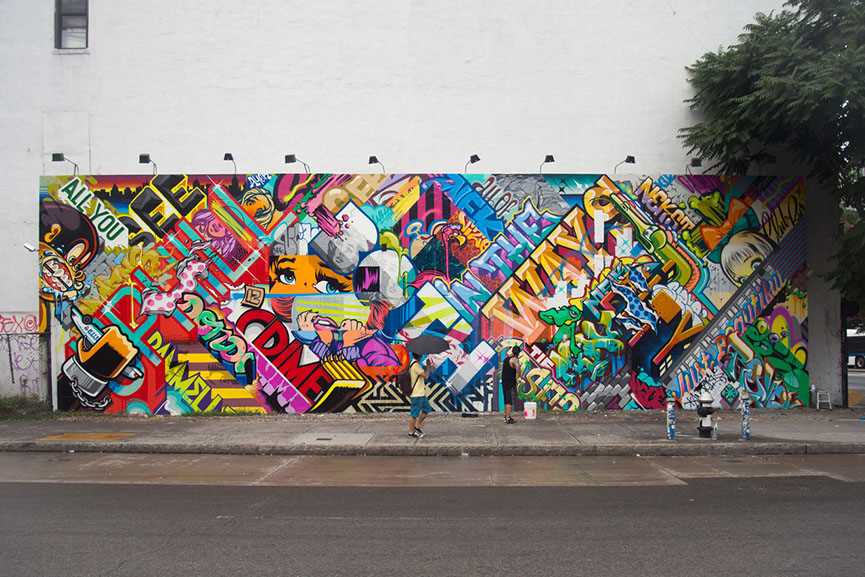
Graffiti art has also been used as a tool for political commentary, allowing artists to voice their dissent and critique oppressive systems and governments. Through bold and provocative images, graffiti artists challenge the status quo and question the actions of those in power.
Political graffiti can be seen as a form of peaceful resistance, providing individuals with a non-violent way to express their frustrations and demand change. It serves as a visual reminder that the voices of the people cannot be silenced and that they will continue to fight for justice and equality.
One notable example of political commentary in graffiti art is the use of stencils to depict iconic political figures, such as Che Guevara or Martin Luther King Jr. These images serve as symbols of resistance and inspiration, reminding viewers of the importance of activism and the power of the individual.
The Controversy Surrounding Graffiti Art
Graffiti art has always been a topic of controversy and debate. While some view it as a form of self-expression and a way to beautify public spaces, others see it as vandalism and destruction of property. The ongoing debate surrounding graffiti art raises questions about the boundaries of art, public space, and the role of the artist.
One of the main arguments in favor of graffiti art is its ability to transform mundane and often neglected urban environments into vibrant, visually stimulating spaces. Artists can use graffiti to convey powerful messages, spark conversations, or simply bring joy to passersby. Some argue that graffiti art is a democratic form of art that is accessible to everyone, as it is often created in public spaces for all to see and enjoy.
However, critics argue that graffiti art is nothing more than illegal vandalism. They claim that graffiti artists disregard private property rights and deface public spaces without permission. They argue that graffiti art not only damages buildings and infrastructure, but it also creates an atmosphere of neglect and decay in neighborhoods. Critics also claim that graffiti art often involves gang-related symbols and messages, further contributing to a sense of insecurity and fear.
Despite the controversy surrounding graffiti art, there have been efforts to legitimize and recognize it as a valid art form. Street art festivals, graffiti murals commissioned by cities, and collaborations between graffiti artists and established galleries have all contributed to a shift in public perception. Some cities have even designated specific areas where graffiti is legal, allowing artists to express themselves freely without fear of legal consequences.
Overall, the controversy surrounding graffiti art brings up important questions about the nature of art, public spaces, and the rights of individuals. While opinions on graffiti art may differ, there is no denying its impact on urban environments and the passionate debates it ignites.
The Market for Modern Graffiti Art
Graffiti, once considered an act of vandalism, has now emerged as a legitimate form of contemporary art. The market for modern graffiti art has skyrocketed in recent years, attracting collectors, galleries, and museums worldwide.
One of the factors contributing to the popularity of modern graffiti art is its unique and expressive style. Artists have moved beyond simple tags and throw-ups, creating intricate pieces that showcase their talent and creativity. This shift has caught the attention of art enthusiasts who appreciate the raw energy and urban aesthetics of graffiti.
The market for modern graffiti art is not limited to traditional art galleries. Street art festivals and exhibitions have become popular platforms for artists to showcase their work and attract buyers. These events often attract thousands of visitors, creating a vibrant marketplace for graffiti artists to sell their pieces.
Collectors play a significant role in driving the market for modern graffiti art. Many collectors are drawn to the underground nature of graffiti and the rebellious spirit it represents. They see graffiti as a reflection of urban culture and a form of social commentary. The limited availability and exclusivity of certain pieces also make them highly sought after by collectors, driving up prices.
Notable graffiti artists have gained recognition and acclaim in the art world, further increasing the demand for their work. Artists such as Banksy, Shepard Fairey, and Invader have become household names, with their pieces fetching high prices at auctions. Their success has brought mainstream attention to graffiti art and elevated its status in the art market.
The market for modern graffiti art has expanded beyond physical pieces. Digital platforms and social media have opened up new avenues for artists to reach a global audience. Artists can now sell prints, merchandise, and even digital artworks online, enabling them to monetize their talent and expand their reach.
As the market for modern graffiti art continues to grow, so do the opportunities for artists to make a living from their passion. While some artists embrace the commercial aspect of their work, others maintain a balance between their street roots and the art market. Regardless of their approach, modern graffiti art has firmly established itself as a significant player in the contemporary art scene.

I am a mural enthusiast and a fervent admirer of street art. Rather than creating murals myself, I am passionate about collecting them. My love for street art knows no bounds. I am dedicated to curating and cherishing these artworks that grace the streets. My collection stands as a testament to my profound appreciation for this form of artistic expression.
read about me



